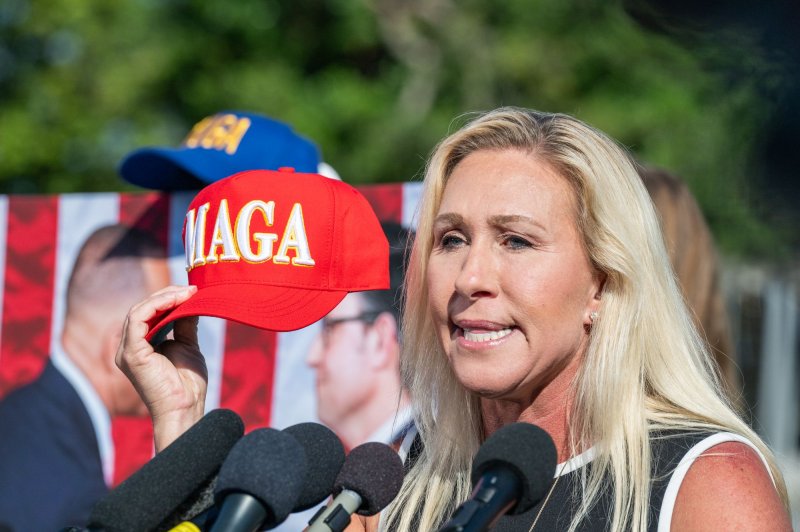Marjorie Taylor Greene’s efforts to remove Mike Johnson from his position in the House faced a pivotal moment after a lengthy meeting between Greene, ally Thomas Massie, and Johnson on Monday. The outcome of this meeting and subsequent discussions on Tuesday could determine the trajectory of Greene’s campaign.
Although details of Greene’s demands remained undisclosed, it’s reported that she seeks commitments such as halting aid to Ukraine, defunding DOJ investigations into Donald Trump, and implementing automatic spending cuts for delayed appropriations agreements.
At the heart of Greene’s disagreement with Johnson lies the “Hastert Rule,” a principle to only advance legislation with majority GOP support. Johnson’s departure from this rule, permitting passage of spending bills and foreign aid packages with Democratic support, has irked the conservative faction of the GOP.
Despite ongoing discussions between Greene and Johnson, Greene retains the option to pursue Johnson’s removal, although the likelihood of success seems uncertain given Democratic support for Johnson and a significant GOP backing for the speaker.

The upcoming meeting between Johnson and Greene does not preclude Greene from initiating the process to vacate Johnson’s position this week. However, with Democrats rallying behind Johnson and a substantial bloc of GOP members supporting him, Greene’s chances of securing sufficient votes appear slim.
Before the critical midday meeting regarding Johnson’s potential removal, the entire House GOP Conference is scheduled to convene for their weekly meeting, setting the stage for further deliberation and potential alignment within the party.
Meanwhile, the Senate’s return to address the reauthorization of the FAA presents another pressing issue. With a looming deadline and the likelihood of resorting to a short-term patch, senators face mounting frustration as the opportunity to address numerous amendments diminishes.
The FAA reauthorization represents one of the final legislative priorities for the year, prompting lawmakers to vie for the inclusion of their respective proposals. The outcome of these deliberations in both chambers will shape the legislative landscape and political dynamics in the immediate future.


